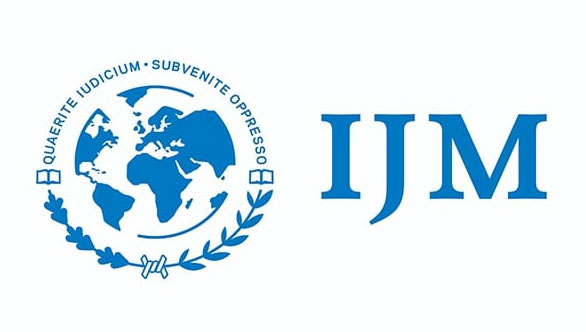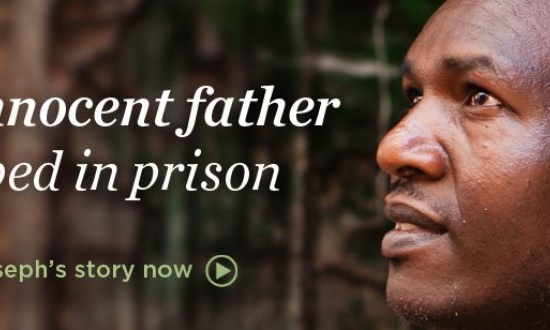Note from Randy: You may have heard of the allegations brought by multiple Mormon women against the central real-life character of the movie The Sound of Freedom, Tim Ballard. Ballard himself is a Mormon, but whether or not these accusations prove true, there are serious concerns about dishonesty and exaggeration about the claims of tactics of Operation Underground Railroad. If Ballard and some of the movie are discredited, we should not throw out the baby with the bathwater. Sex trafficking is a very real and serious problem even if some of the allegations are confirmed to be true, and even if the movie is not reflective of the most common and effective ways to rescue children and adults from sex trafficking.
I am simultaneously thankful for the attention drawn to the terrible crime of sex trafficking and the needs of its victims, and concerned that no unethical people or groups benefit from that attention. Note that months before these allegations emerged, Ministry Watch reported on matters of major concern regarding the small percentage of the money received by Operation Underground Railroad that actually goes to helping free people from sex trafficking.
One of the organizations Eternal Perspective Ministries supports is the biblical, Jesus-centered, and effective ministry of International Justice Mission. As the following article from IJM explains, their real-life work is nothing like what’s shown in the movies. IJM’s founder and CEO, Gary Haugen, has become a friend as I’ve seen and spoken with him periodically at conferences over the years. A few months ago, Gary and I had a long phone conversation. I was impressed and touched by what he shared. One of the things IJM does is teach and train local police in how to enforce laws so they can rescue victims of human trafficking.
If you’re looking for a solid ministry to support, one with a long track record of being used by God to bring freedom and hope to needy people around the world, I recommend you consider IJM.
Child trafficking is nothing like in the movies. Here’s why that’s very good news.
Bullet proof vest. Check. Semi-automatic weapon. Locked and loaded. Side arm. Holstered. A chiseled, rugged looking man equips tactical gear piece by piece with a determined look in his eye. Before he sets off alone on a clandestine international mission to rescue a child who has been trafficked, he clutches a keepsake dangling from his neck and pauses for a moment. “I will find you.”
If this scene sounds familiar, it’s because you’ve probably seen something like it in a movie. Hollywood movies are expertly scripted to paint a devastating picture of child trafficking, often including the story of how one man’s heroics save the day. Movies like these can be an emotionally gripping way to introduce large audiences to the problem of human trafficking. But action movies are not an accurate reflection of reality – even when they are based on true stories.
If you’ve recently learned about the global issue of child trafficking from a movie and have been inspired to help do whatever it takes to end it, you’ve come to the right place. The first step you can take is to learn more about the issue. There are several trusted global organizations to learn from with tons of helpful resources. Most organizations are eager to educate, because the end of child trafficking must begin with an accurate and grounded understanding of the problem. And a good way to start learning is by recognizing the difference between fact and fiction.

International Justice Mission is a global non-profit with 25 years of experience helping rescue children, women, and men from violence. In that time, we’ve witnessed the reality of violence and trafficking millions of people face every day. But we’ve also seen things like rescue, protection, and justice for vulnerable people on a scale once thought to be impossible.
We recently celebrated ten years of work in the Dominican Republic, which resulted in a staggering 78% reduction in child sex trafficking. You can read more about it here.
Here are five examples of how child trafficking has been portrayed in movies, and how they compare to IJM’s real work in the Dominican Republic.
Reel: Children are mostly shown kidnapped on the streets by strangers, stolen from their families in a moment of chaos.
Real: Most children are trafficked by somebody close to them, like a friend, family or relative. While violent force is sometimes used to traffic children, it often isn’t even necessary. For example, families in the Dominican Republic under desperate economic circumstances were typically targeted by traffickers who tricked them with fake job offers and money for school.
Reel: After children are taken, they are sent to other countries in shipping containers to be sold.
Real: While cross-border trafficking does happen, the vast majority of trafficking cases globally are domestic. Often, just moving a child across the equivalent of a state line is enough to separate them from community protection.
Reel: Children are trafficked on the dark web, where buyers and sellers operate with anonymity in the shadows.
Real: Children are trafficked online using the same tools, platforms and technology we use every day. In the early 2000’s before IJM began work in the Dominican Republic, children were bought and sold openly in the streets, in parks and on beaches.
Reel: A lone wolf ex-military officer travels overseas to rescue a child while singlehandedly dismantling all the systemic issues that contribute to child trafficking.
Real: Anti-trafficking organizations like IJM work with local law enforcement, NGOs and authorities for years to help develop their own capacity to rescue children. As a result of IJM’s close work with the Dominican government over ten years, lasting change was measurably achieved. Only local law enforcement has the authority to conduct a rescue. IJM’s role was to help give them the support needed to do that more effectively.
Reel: One man’s brave, daring, cinematic attempt to rescue a child is the story that drives the entire plot. Once the child is rescued, the movie is over and the credits roll.
Real: Rescue is just the beginning of the story. The goal of anti-trafficking work is to help rescue victims in immediate need while addressing the systemic root causes that allow children to be trafficked in the first place.
Over ten years later, child sex trafficking in the DR has decreased measurably and dramatically. And it isn’t a fluke. In fact, IJM has successfully reduced violence against vulnerable people in all nine regions where we’ve concluded program work. This is why we believe it’s possible to rescue millions and protect half a billion people from violence by 2030. We know what works, we know how to get it done, and we know there are people like you who are excited to help make it happen.
Child trafficking is nothing like in the movies. And that’s very good news. Because while the realities of child trafficking are far more harrowing than what you’ll see on screen, the hope that we can end it for good is real.
Photo: Unsplash



